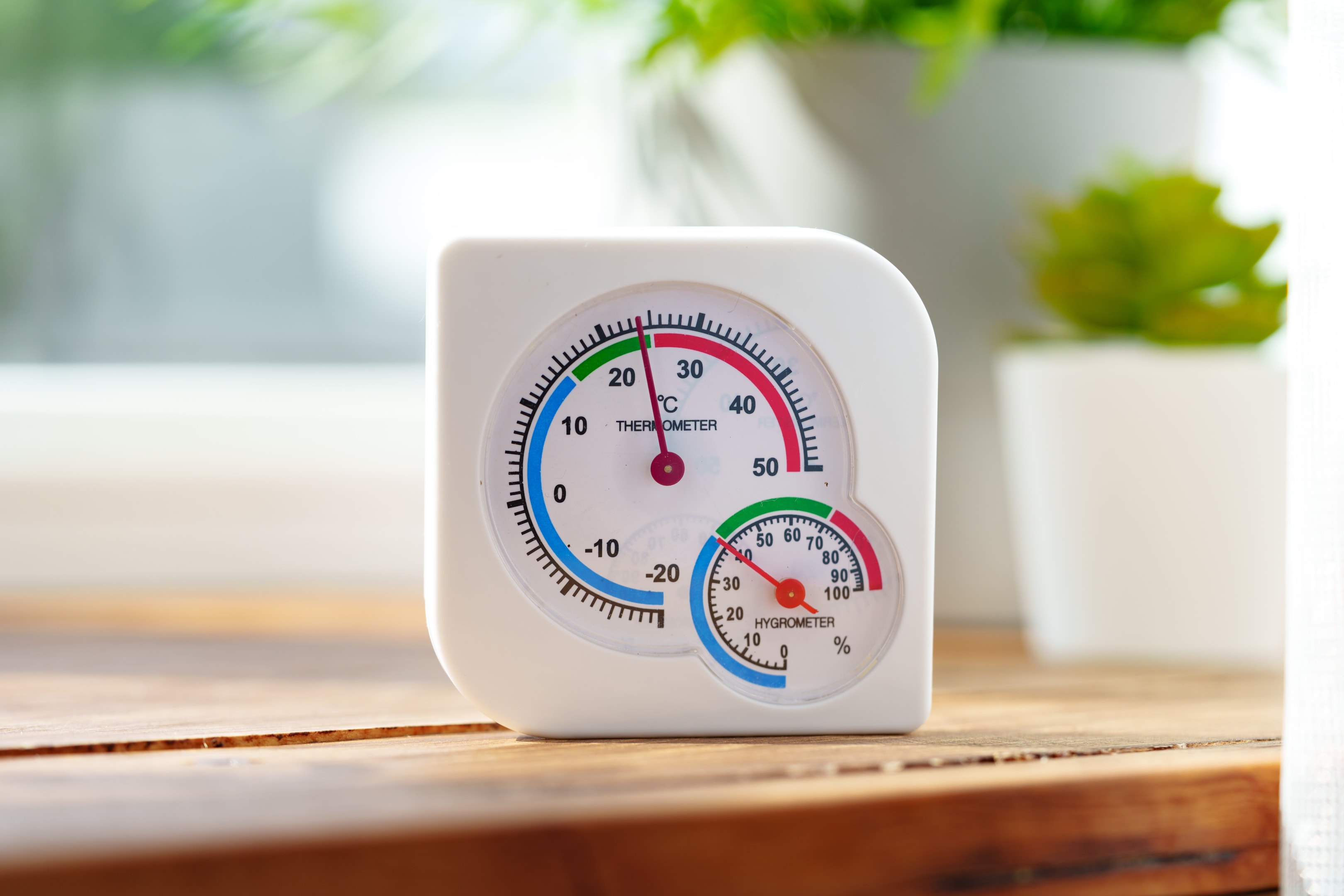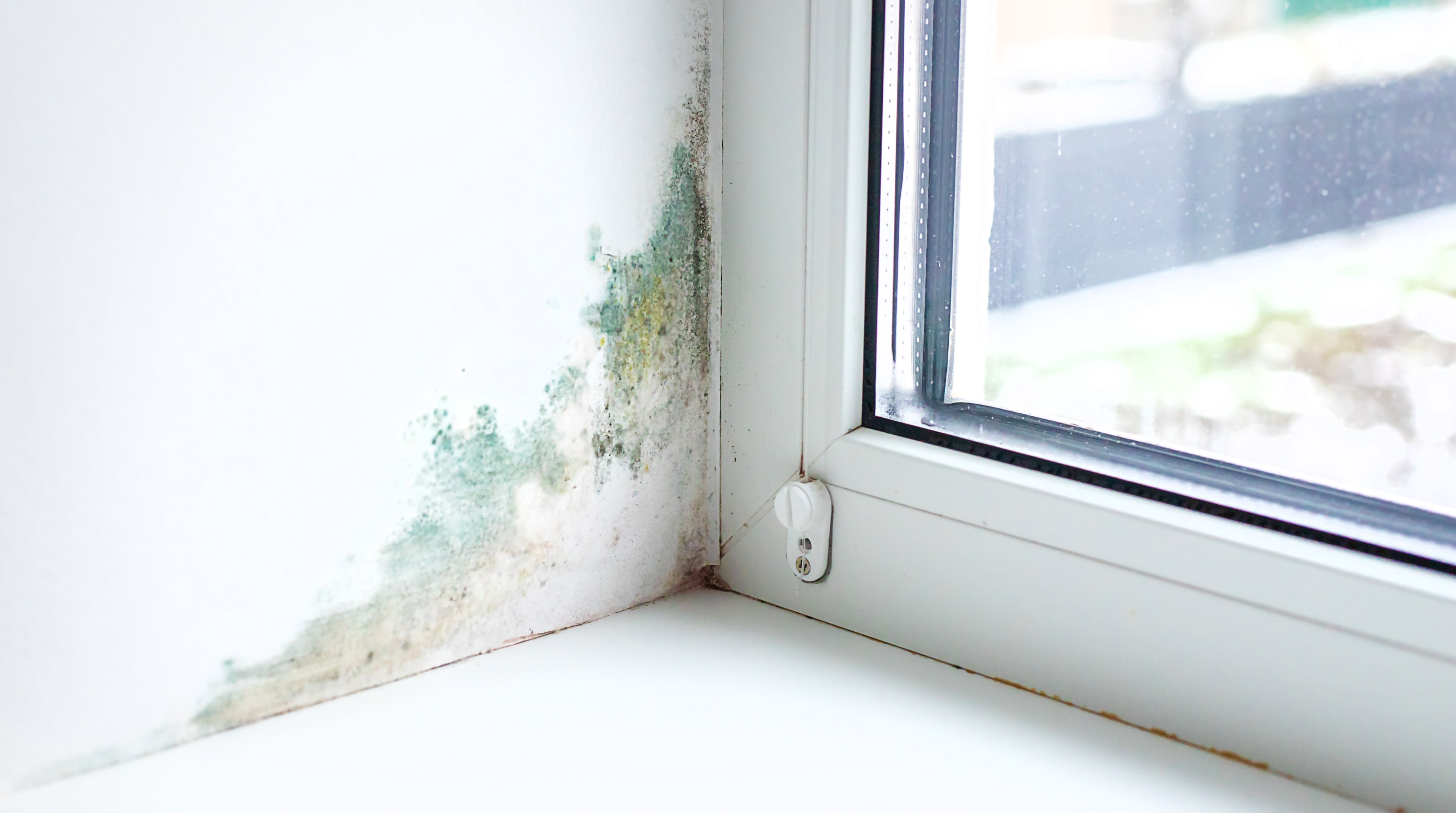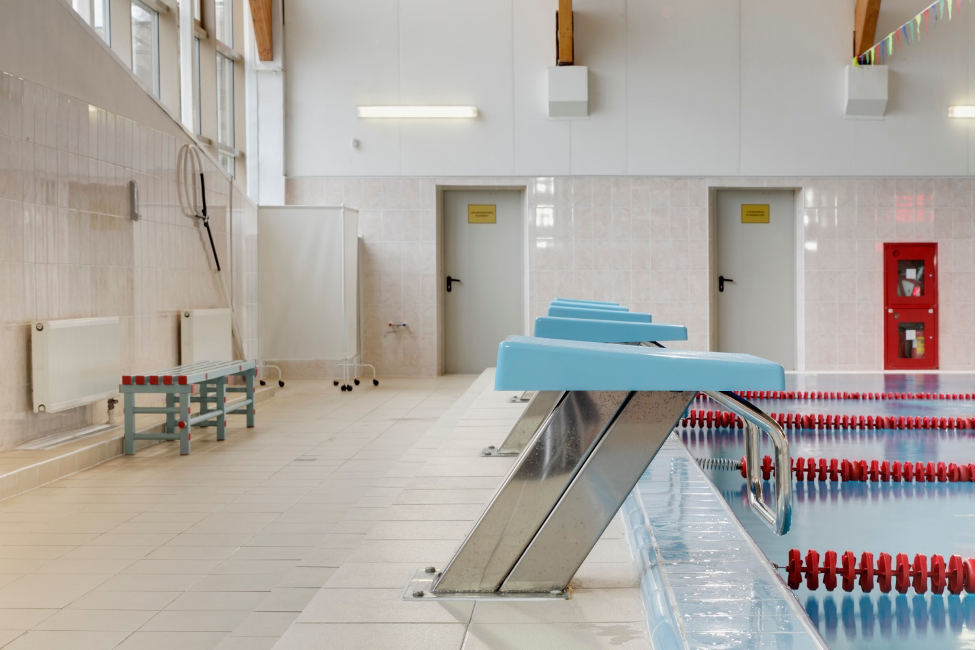Why Dehumidification Matters in HVAC Systems
Maintaining proper indoor humidity levels is essential for comfort, health, and building integrity.
The summer or warmer seasons tend to have more moisture in the air compared to the winter or cooler seasons where the moisture level is low. Maintaining proper indoor humidity levels is essential for comfort, health, and building integrity. Poor humidity levels can lead to discomfort of occupants and promote mold growth. A properly sized HVAC unit should provide comfortable conditions as well maintain proper humidity levels in the space.
What is Dehumidification?
ASHRAE defines dehumidification as “the removal of water vapor from air, gases, or other fluids.” Most people think of using a dehumidifier when trying to reduce moisture within a space. However, a properly designed HVAC system provides not only thermal conditioning to the indoor space, but also dehumidification, which can save on the cost of only buying one unit as opposed to two.
Need assistance?
Your local AAON rep is ready to help.
👉 Find a Rep
How HVAC Units Provide Dehumidification
HVAC units can provide dehumidification in one of two ways – cooling-based or desiccant. Desiccant dehumidification requires the humid air to be exposed to a desiccant material which absorbs moisture. The moisture latent desiccant is then moved, usually via wheel, to an alternate airstream to expel the moisture and regenerate via exposure to heat. This process can be energy intense and more complex to integrate into an HVAC system, therefore cooling-based dehumidification is much more common. For this reason, the remainder of this article focuses on cooling-based dehumidification.
Cooling-based dehumidification can occur as a function of the general cooling equipment or a unit dedicated to dehumidification, such as a dedicated outdoor air system (DOAS), can be incorporated into the system. DOAS is a piece of cooling equipment that has been designed to handle high humidity loads associated with the outdoor air brought into a building. A centralized DOAS unit allows the other HVAC equipment to focus on sensible cooling, reducing their size and eliminating the complications related to the distributed condensate collection. For proper moisture management, sensors must be used that monitor humidity.
Cooling: Warm, moist air is passed over a cold coil, causing water vapor to condense on the coil surface. This is similar to a glass of ice water that produces condensation on the glass. This happens when the air temperature falls below the dew point temperature (the condition at which the water in the air condenses). This process results in cool air leaving the coil that contains less moisture.
Reheating: Depending on the application and the desired air temperatures, it may be necessary to cool the air to lower than the desired temperature to accomplish the required dehumidification. However, if the air is too cold to deliver to the space a reheat coil may need to be installed. Reheat can be accomplished with a general heating coil (i.e. electric or hot water), although codes may limit this based on the system type and its size. Preferably, for energy savings when using a DX system, hot gas from the refrigeration circuit is directed to the reheat coil, which is called condenser heat recovery.
Opportunities to Reduce Energy Use: Maintaining acceptable space humidity can consume more energy than simply conditioning a space to a target thermal condition. More advanced features are available to help reduce utility use associated with dehumidification. Incorporating multiple compressors, variable-speed compressors, and modulating fans allow the cooling system to best match demand reducing the power consumed. Specifying energy recovery in the central HVAC or DOAS units responsible for the introduction of outside air is another way to reduce the power consumed by the system. When cooling, energy recovery preconditions the outside air by transferring heat and moisture to the air being exhausted from the building, reducing the work required by the coil to cool and dehumidify the air delivered to the space.
Key Benefits
Improved Indoor Air Quality & Comfort
Humidity in a space is a delicate balance, with too little or too much leading to an uncomfortable environment with potentially poor indoor air quality.
High humidity, when not properly managed, can lead to respiratory and skin issues and can allow some viruses and bacteria to thrive. High humidity can also impact comfort because the occupants’ perception of the temperature is altered. High humidity causes the occupant to perceive the space as warmer than it actually measures, increasing the amount of cooling that needs to be provided to the space, whereas the opposite is true for conditions of low humidity when heating. Low humidity can dry out the skin, nasal and throat passages leading to skin irritation or respiratory problems, as well as increase transmission of airborne illness. Between 30% and 60% relative humidity is a target range for applications focused on human health and comfort, although in some cases the dew point may be measured as an alternate method of meeting acceptable space parameters.

Energy Efficiency and Cost Savings
Properly sizing an HVAC system is essential for effective humidity control and long-term energy efficiency. High humidity loads increase the required capacity of the cooling system, which raises energy consumption and operational costs. An undersized unit may struggle to remove moisture, running continuously without reaching the desired comfort level. Conversely, an oversized system may cycle too frequently, leading to energy waste and inconsistent humidity. Using properly sized equipment, based on both sensible and moisture loads, improves system performance, saves energy, and has the ability to reduced costs over time.

Preventing Mold, Mildew, and Structural Damage
High humidity promotes the growth of mold and mildew. This makes the environment not only dangerous to your occupant’s health but also affects finishes and the structural integrity of the building. Since mold spores in buildings are nearly impossible to eliminate controlling the moisture within the space is critical.
Correct section of equipment, proper placement of sensors, and precise HVAC unit controls can better manage space humidity providing better indoor air quality and comfort.

AAON’s Advanced Dehumidification Technology
AAON units offer many innovative features that support dehumidification such as:
Modulating Hot Gas Reheat: Provides precise reheating of the air, improving comfort while minimizing power use.
To learn more about different hot gas reheat systems, click here
Return Air Bypass: Prevents overcooling during dehumidification by blending bypassed return air.
Variable Capacity Technology: Uses VFD-controlled compressors and fans to adjust operation based on demand.
Click here to learn more about the advantages of different compressor technologies
High Capacity Six-Row Coils: Maximize moisture removal compared to standard coils.
Compared to other manufacturers, AAON equipment is highly configurable and engineered with precision for a wide range of applications. AAON units provide greater flexibility and efficiency, lowering operating expenses and extending equipment life. AAON’s support continues beyond installation to enhance the reliability of your dehumidification system.
Talk to your AAON representative to explore dehumidification solutions designed for your specific environment.
Applications that Require Dehumidification
Not all buildings’ HVAC systems are properly designed, installed, and maintained to address humidity as exhibited by the prevalence of mold in buildings, occupant discomfort, and other indicators of high humidity. Buildings with exceptionally high moisture levels are most susceptible to these issues. Schools, auditoriums, and churches require large quantities outdoor air which introduce significant moisture to the building in many of the climates of North America. Humidity levels in natatoriums, hotels with indoor pools, fitness facilities, and restaurants are compounded by the fact that they not only bring in a lot of moist outdoor air, but they also must address the moisture generated in the space. Precise control over humidity is especially critical to the function and success of applications such as:
-
Museums: to protect sensitive artifacts from damage due to moisture fluctuations
-
Laboratories: to ensure accurate and reliable experimental results and protect sensitive equipment and materials
-
Healthcare: to mitigate the spread of infection and ensures the proper functioning of medical equipment
-
Grocery Stores: to prevent condensation on refrigerated cases, ice buildup on frozen food, and to maintain food quality.
-
Manufacturing: to provide conditions needed for product production quality
-
Indoor Pool & Natatoriums:
Warm temperatures and constant evaporation create high humidity levels in spaces housing indoor pools (hotel or natatorium), requiring precise dehumidification to prevent structural damage, save energy costs, and maintain a comfortable environment for the user. Units for these applications are also crucial in reducing the amount of chemicals in the air from the chlorine. This is usually accomplished by means of high filtration and the introduction of high volumes of outside air.

Choosing the Right Unit for Dehumidification
Selecting a dehumidification unit for an application is complex. There are many factors to consider, such as:
-
Facility type and size
-
Internal loads
-
Moisture sources
-
Operational parameters
-
Occupancy and associated ventilation requirements
-
Installation constraints
-
Climate of installation site
-
First costs and operational budget
The priorities and limitations change with each application making the selection challenging and best determined with the help of a professional. There are multiple calculations required to properly size a unit. Correctly selecting and sizing a dehumidification unit is critical to cost effectively and efficiently managing moisture.
Frequently Asked Questions (FAQ) About Dehumidification
1. Why is humidity control important in HVAC systems?
Maintaining proper indoor humidity levels is essential for occupant comfort, health, protecting building integrity and meeting functional parameters of more specialized applications. Unbalanced humidity can lead to discomfort, respiratory issues, and mold growth.
2. What is dehumidification?
Dehumidification is the removal of water vapor from the air. According to ASHRAE, it refers specifically to the process of reducing moisture content in air, gases, or fluids to create a more controlled environment.
3. How does dehumidification work in HVAC systems?
Dehumidification via cooling occurs when warm, moist air is passed over a cold coil, causing moisture to condense. If the resultant air is too cold to deliver to the space, then it is reheated before introducing it to the space to maintain comfort. Advanced system features like variable-speed compressors, modulating fans, and heat recovery can be applied for more efficient and precise moisture control.
4. How does AAON’s technology improve dehumidification?
AAON offers advanced solutions to improve humidification, including:
-
Modulating Hot Gas Reheat for precise comfort with power savings.
-
Return Air Bypass to prevent overcooling.
-
Variable Capacity Compressors & Fans for dynamic response to humidity loads and reliable performance.
-
High-Capacity Six-Row Coils to maximize moisture removal.
5. How energy-efficient are modern dehumidification systems?
Modern systems, including those manufactured by AAON, are built for efficiency. Features like variable-speed components, condenser heat recovery, and intelligent controls ensure optimal performance while reducing energy costs.
6. What types of facilities benefit most from humidity control?
Humidity control is critical for nearly all applications. Spaces that generate significant moisture or require high quantities of outdoor air need to manage humidity to maintain the building integrity. While comfort and air quality are essential to occupant well-being and satisfaction. Some applications may dictate the need for even more precise humidity control to support the function of the space such as artifact preservation, manufacturing process, and operation of equipment.
7. How do I choose the right dehumidification unit for my space?
Choosing a dehumidification unit for an application is complex due to the many factors that need to be considered -
-
Facility type and size
-
Internal loads
-
Moisture sources
-
Operational parameters
-
Occupancy and associated ventilation requirements
-
Installation constraints
-
Climate of installation site
-
First costs and operational budget
The priorities and limitations change with each application making the selection challenging. A professional assessment is recommended for optimal system selection because correctly choosing and sizing a dehumidification unit is critical to cost effectively and efficiently managing moisture.
9. What kind of maintenance is needed for humidity control systems?
Routine maintenance includes:
-
Cleaning/replacing air filters
-
Checking drainage and condensate removal
-
Inspecting coils and fans
-
Scheduling professional system checkups and service
Proper maintenance and service ensures long-term performance and system reliability.